Home Exercises Part 3: Cat-Cow
This is our third blog post in the series where we put popular exercises under scrutiny to examine how they stack up—or not—against the principles of healthy posture. Here we are looking at “Cat-Cow,” a common exercise for mobilizing the spine.
Cow is one of the “holy cows” of conventional exercise. Done on all fours, it puts the spine into extension (swaying). It is paired with Cat, which puts the spine into flexion (rounding). Alternating between these postures is widely considered to be a good or even necessary exercise for mobilizing the spine.
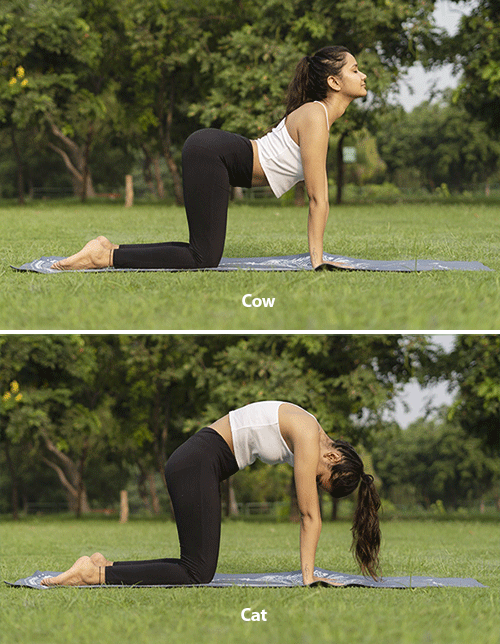
Cat-Cow is widely considered to be a good mobilizing exercise for the spine—but there is a big downside. Pixahive
Alternating between extreme extension and flexion stresses the joints of the spine, which then sustain wear and tear. It also results in the surrounding muscles stiffening to protect the spine. True, it can feel good to stretch out tight muscles in this way, but rather than relying exclusively on repeated extension and flexion, it’s better to address the underlying cause of the stiffness, which is usually poor posture. People with good posture are not compelled to do this sort of exercise.
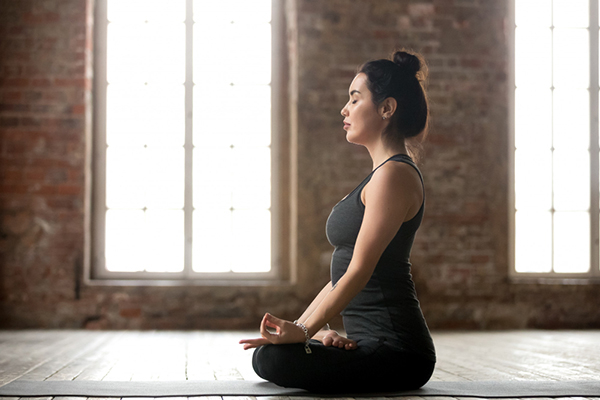

Arching the back (above) and slumping (below) are common but damaging postural habits
that we do not want to reinforce in our exercises. Freepik
In addition to the real-time wear and tear in the spine, Cat-Cow reinforces the poor postural patterns of arching and slumping that are common in our culture.
Many of us arch the lumbar spine to be “upright.” This compresses the discs, nerves, and soft tissues of the lower back which leads to degeneration, pain, and dysfunction. It is also common to slump the upper back when sitting or standing. This progressively overstretches the spinal ligaments, increasing kyphosis. Cat-Cow augments both these common characteristics of modern posture.
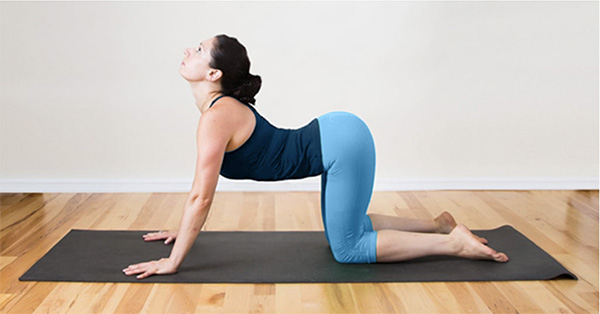
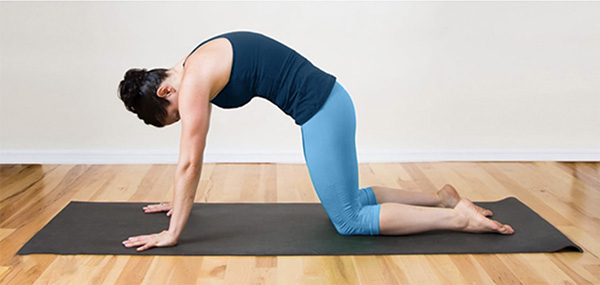
Cow (above) can deepen and compress an already tight lumbar curve. Cat (below) will then overstretch an already rounded upper back.
Both movements compound common posture problems.
If the chin is lifted and the neck is swayed in Cow, this will additionally put pressure on the cervical joints.
Due to its horizontal orientation, without an awareness of healthy posture, this is an exercise that encourages the abdominal muscles to “switch off” rather than retain a healthy baseline tone. Hanging the abdomen from the lumbar area like a deadweight encourages exaggerated distortion of the lumbar spine.
After compressing the lower back in Cow pose, most people then round into Cat to stretch it out. Training the upper back to hunch in Cat will then send the shoulders and head further forward in daily posture. Rather than mobilizing the spine, Cat-Cow can create a destructive spiral of a tight lower back and an overstretched upper back.
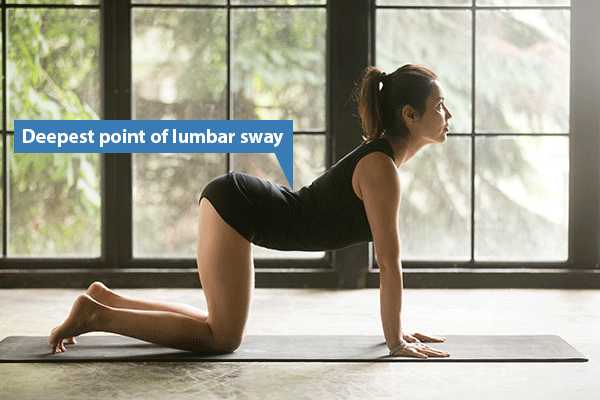
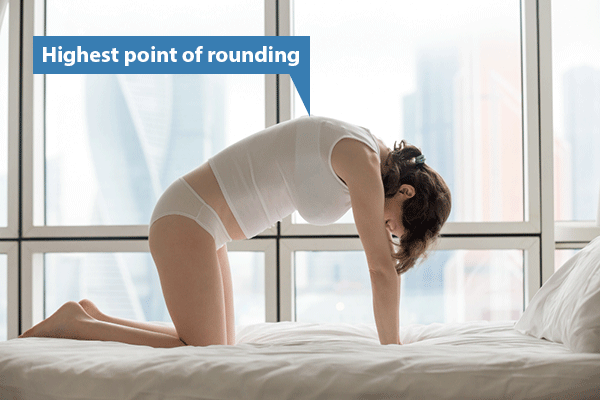
Rather than encouraging even length throughout the spine, Cat-Cow pushes deeper into the existing curves. Freepik
If you are concerned that the yoga or exercises you do could be exacerbating a habit of arching and/or slumping, we recommend exploring how to modify your regimen in an Initial Consultation. You can arrange an Online Initial Consultation or an in-person Initial Consultation if you have a Gokhale Method® Teacher near you.
The 1-2-3 program on Monday, August 9 will show you how to do a modified Cat-Cow. In Cat you will learn to stretch the upper back without overdoing it, and how and why not to round the lower back in the process. In Cow I will teach how to restrict the concave sway in the lower back while giving a satisfying stretch through the thoracic spine where it will do no harm. You will learn how to invite the right amount of movement in the right parts of your spine.
If you would like to join the Cat-Cow class but have not yet subscribed to the 1-2-3 program, sign up now for your 7-day Gokhale Exercise Free Trial.
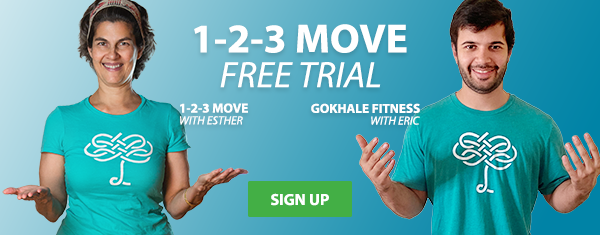
1-2-3 Move happens daily with Esther at 9:45 a.m. (Pacific Time)
Gokhale Fitness with Eric runs Mondays, Wednesdays, Fridays from 7–7:25 a.m.
(Pacific Time), and Tuesdays, Thursdays, Saturdays from 3–3:25 p.m. (Pacific Time)

Comments
Great article! When I was
Great article! When I was given this exercise to do in Physical Therapy for my lower back and right hip osteoarthritis, I "felt" is was not good for my body .... especially from the information I have learned from you Esther! Even though it is a very termporary position, purposely arching the back and dropping the pelvic region just did not feel right, and I stopped doing them.
I also noticed the blue curved sofa chair in the photo above .... what a horrible piece of furniture for posture! I recall an article you had awhile back about how the furniture over the past decades has degraded our healthy natural posture forms - this is a perfect example!
Thank you for such informative articles Esther. Because of you, the past decade I have been increasingly mindful of my posture and every day functional movements (I am a 62 y/o former personal trainer). The first thing I notice about someone (including young children) is their posture; unfortunately the majority of them are not good ...
Thank goodness for the
Thank goodness for the feedback we get from our bodies! And glad that your body and eye are getting tuned with time.
Whenever I see poor posture around me, I remember that human beings are, thankfully, pretty resilient - and I hope for the particular person that they will not suffer. And then I redouble my efforts to get this work more widely available!
Thanks for this article - and
Thanks for this article - and many before - helping us to improve our posture by first recognizing habits that are detrimental to our posture.
Always very infomative. Keep up your excellent work. Thanks, Esther!
Thanks for the feedback - and
Thanks for the feedback - and so glad to be of service.
What are your thoughts on a
What are your thoughts on a standing cat-cow? Your comments in this article refer to the horizontal orientation.
My trainer has had me doing a standing 20 reps of one, followed by a standing 20 reps of the other. cat-cow.
For me, this is a standing exaggerated J-spine 20 times followed by a standing 20 reps of a pelvic thrust. Should I discontinue this?
Add New Comment
Login to add commment
Login